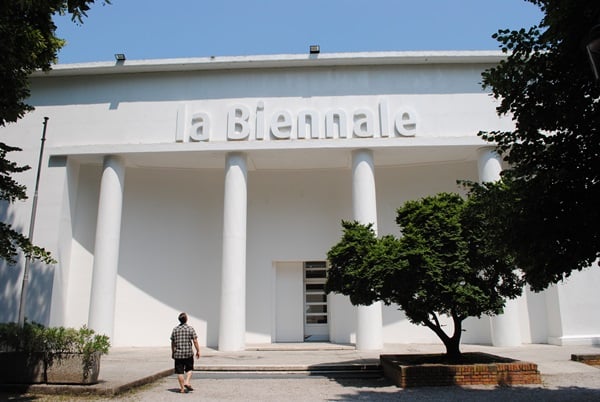Art & Exhibitions
Venice Loses Two National Pavilions, as Kenya and Costa Rica Pull Out
The number of participating countries has dropped to 88.

The number of participating countries has dropped to 88.

Sarah Cascone

With the Venice Biennale set to open to the press next week, Kenya and Costa Rica have both withdrawn their national pavilions from the event, dropping the number of participating countries to 88, reports Hyperallergic.
Controversy surrounding the planned line up for the Kenyan presentation, which consisted primarily of Chinese artists, had been growing for weeks (see “Shame in Venice”: Italian-Chinese Line-up for Kenya’s Biennale Pavilion Sparks Outrage). Only one Kenyan artist had been selected for the exhibition, which was organized by Italians Paola Paponi and Sandro Orlandi Stagl, who organized the similarly controversial exhibition for Kenya’s pavilion two years ago.
Both exhibitions will be held as originally planned, but they will not have the official Biennale banners outside, and will not have any other official affiliation with Costa Rica or Kenya.
Earlier this month, in response to a petition on Change.org, Hassan Wario, the country’s minister of culture, sports, and the arts, officially disowned the exhibition, titled “Creating Identities” (see Kenya Disowns Controversial Venice Biennale Pavilion). Now, the pavilion has been cancelled outright, as Kenya looks to 2017 to present what Wario, in a statement, has called “a truly representative Kenyan Pavilion.”
Costa Rica’s pavilion also featured an unusually high percentage of foreign artists, but that was only part of the problem. Italian curator Gregorio Rossi, the pavilion’s organizer, was charging artists €5,000 ($5,000) a piece for the privilege of showing their work in the exhibition, allegedly due to a lack of funding.
One of many countries without an official pavilion in the Giardini, Costa Rica has to rent a temporary venue during the Biennale. El País reports that Rossi claims the country’s space at the Palazzo Bollani cost €200,000, and that without an official sponsor, that burden necessarily fell on the artists. To cover the spread, Rossi enlisted no less than 50 artists to participate, only four of them Costa Rican.
“It’s unacceptable,” said commissioner Ileana Ordoñez Chacon to El País. (There are no official rules against charging artists a fee to appear in the Biennale.) In a letter announcing the pavilion’s cancellation, she decried “the participation of Costa Rican artists in a mixed space shared with artists from other countries in the same hall (known as Costa Rica),” referring to the fact that though the space is called the Costa Rican pavilion, the vast majority of the artists are not from that country. Chacon called the arrangement “not suitable” and noted that the country withdrew for “reasons beyond [its] control.”
The 56th Venice Biennale will be on view May 9–November 22, 2015.